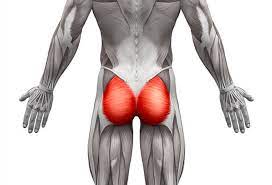Elbow exercise:
Table of Contents
What is Elbow exercise?
Elbow exercises are important for problems and pain related conditions of the elbows. If you are suffering from an injury to your upper limb or elbow, you may benefit from this exercise and the services of a physiotherapist to help you get a normal range of motion (ROM) and strengthen your arm muscles.
Elbow exercises may be an important component of your elbow injury rehabilitation. It is a good idea to begin slowly and build up gradually if you are new to exercise. Elbow exercises aid to build strength in the muscles surrounding your elbow to support a full range of motion. Strong elbows are important for avoiding repetitive motion injuries such as tennis elbows and golfers elbow.
What is an elbow joint?
This is a hinge joint made up of 3 bones, the humerus, ulna, and radius. The bone ends is covered with cartilage. This Cartilage has a rubbery consistency that allows the joints to slide easily against one another and absorb the shock. These bones are held together with ligaments that form the joint capsule.
The major muscles involved in moving the elbow include:
- Biceps brachii
- Triceps brachii
- Brachioradialis
- Anconeus
- Brachialis
- Pronator teres
Health benefits of elbow exercises.
- Helps to strengthen the arms.
- Helps to improve forearm grip and strength.
- Helps to fulfill daily tasks.
- Helps to improve muscle mass.
- Pulling and pushing function.
- Stability to your arms and shoulders increases flexibility and increases range of motion.
- Helps to prevent wrist-related injuries
- If you are a sports person this exercise is the best for you, such as regular strengthening and stretching exercises
- Help in the prevention of sports-related injury, such as a tennis elbow, Golfer’s elbow
- Helps to increase blood flow to your wrist, and provides warmth to the muscles and ligaments around the hand and wrist.
- Helps to Increase the oxygen supply and nutrients that move through the joint membranes decreases the process of necrosis and removes necrotic cell debris from the wrist and hand.
- Provides good flexibility.
- Improve the range of motion.
- Decrease the risk of injury by lengthening the muscles.
- Improve the effectiveness of pain.
- Helps to Strengthen the muscles around the hand joint for stability.
- Stretching your wrists activate your forearm and hand muscles.
- Increasing your mobility of the wrist joint.
- Reduce muscle soreness as you fall forward onto your outstretched hand.
- Wrist exercises increase ROM and help to decrease the risk of injury.
- It also helps decrease the possibility of damage by slightly lengthening muscles.
Here we explain different exercises for the elbow joint.
Wrist extension
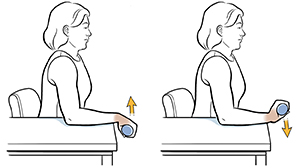
How to do it?
- To do this exercise you have to Sit in a chair and hold a two-pound dumbbell vertically in your hand, with your elbow resting on your thigh.
- Palm should be facing ground, straighten your wrist by curling it away from your body.
- If this is too challenging, do the movement with no weight.
- Return to the initial position and repeat ten times on each side.
Wrist flexion
How to do it?
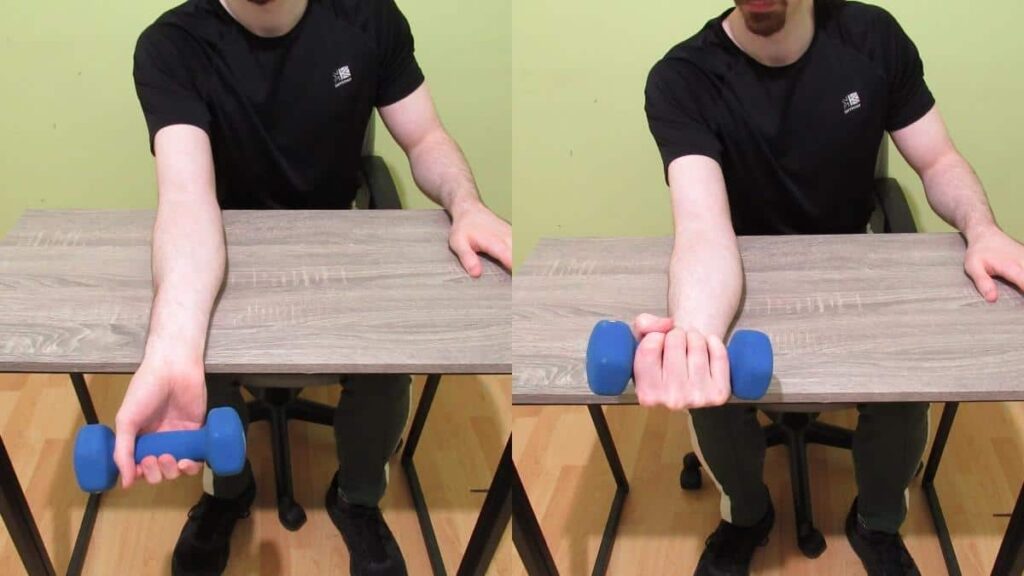
- The wrist flexors are a group of muscles that use for the wrist bending of the wrist.
- These small muscles that connect to your elbow are also subject to overuse, which can lead to pain and inflammation over the elbow.
- To do this exercise you have to Sit in a chair and hold a 2-pound dumbbell vertically in your hand, with your elbow resting on your thigh.
- Your palm should be facing up, flexed your wrist by curling it toward your body. Return to the initial position and repeat ten times on both sides.
Wrist turn
How to do it?
- To perform this exercise you have to Flexed the elbow up to 90 degree with the palm facing towards the ceilings.
- Turn the hand over slowly until the palm is facing down.
- Hold this position for five seconds and try to repeat 10 repetitions.
Wrist turn with weight
How to do it?
- This is the same as a wrist turn but it performs with a dumbbell.
- Flexed the elbow at a right angle with the palm facing towards the ceilings.
- Turn the hand over slowly until the palm is facing down.
- Hold this position for 4 to 5 seconds and try to repeat 10 to 12 repetitions.
Wrist lift, palm up
How to do it?
- To perform this exercise you have to grab a lightweight, such as a small dumbbell or a tin of food flexed the elbow at a right angle ten straighten the hand outwards, palm facing up flexed the wrist up towards the sky.
- Hold this position for five seconds, then release slowly repeat this 9 more times do2 to 3 sets of 10 repetitions
Elbow bend
How to do it?
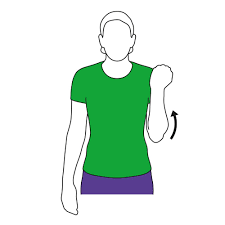
- To perform this exercise you have to stand straight and lower the arm to any one side slowly flex the arm upwards until the hand touches the shoulder.
- Hold this position for 20 to 30 seconds and do it 10 times.
Wrist extensor stretch
How to do it?
- To perform this stretch you have to lose your elbow, straighten the arm, and flex the wrist back as if signaling stop.
- It is okay to use the opposite hand to help extend the hand gently.
- Hold this position for about thirty seconds and repeat 5 times.
wrist flexor stretch
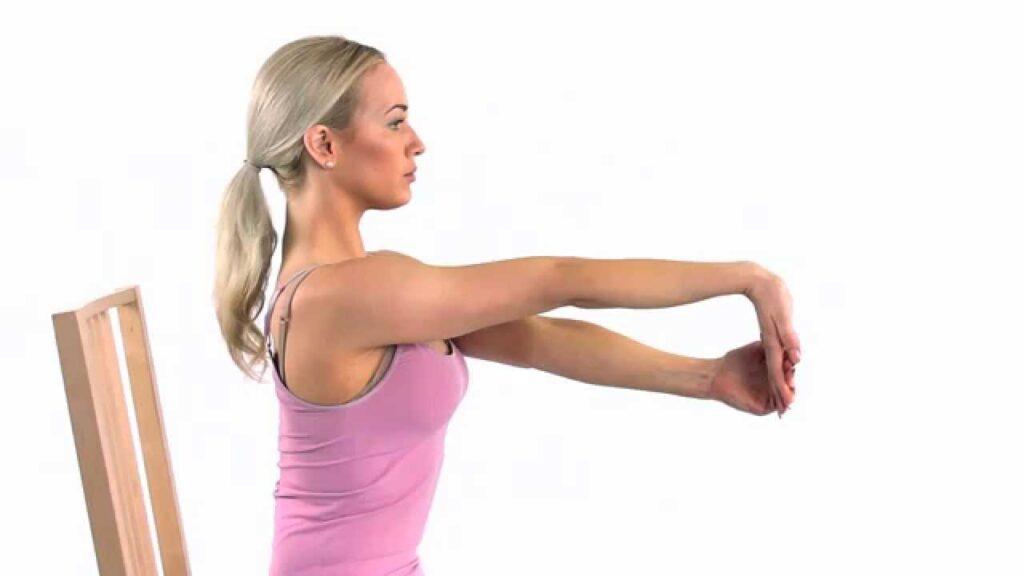
How to do it?
- To do this stretch take a position like a wrist extension stretch, except the wrist is flexed down (opposite of “stop”).
- Use the opposite hand to help.
- Hold this position for 20 to 30 seconds and repeat 5 times.
Fist squeeze
How to do it?
- Use a rolled-up towel, sock, or tennis ball and place it in the palm grip the ball or towel with the fingers to form a fist squeeze tightly for 10 seconds repeat nine more times
Towel twist
How to do it?
- To perform this exercise you have to Sit in a chair, grab a towel with both hands, and your shoulder is relaxed.
- Roll the towel with each hands in opposite directions, as if you are wringing out the water of washed clothes.
- Repeat 10 to 12 times, then repeat another ten times in the other direction.
Biceps Curl
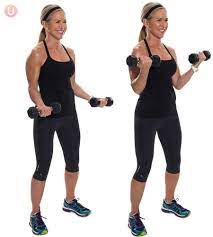
How to do it?
- To perform this exercise you have to stand or sit on a bench or chair.
- With the palm facing forward. hold a 2-pound dumbbell in both hands and the elbow against your side, and raise the elevate up toward the shoulder.
- Your elbow should be firmly against your side and lower the weight back to the starting position.
Triceps Extensions
How to do it?
- To perform this exercise you have to Lie on your back on a weight bench. Hold a dumbbell starting with the elbow straight.
- Keep your upper arm vertical while slowly bending the elbow toward the forehead. Slowly return to the upright position
Isometric Elbow extension exercise
How to do it?
- To perform this exercise you have to Sit in a straight-backed chair with armrests.
- Put your feet flat on the ground. Put your hands on the armrests and push up with your arms, lifting your bottom slightly off the chair. Hold for a count of six.
- Slowly lower yourself into the chair and relax.
- Repeat this strengthening exercise 10 times. This exercise works the triceps muscles located on the back of your upper arm. These muscles extend your arms and help you push things away from you.
- This muscles also active when you are pushing yourself up from a chair with your arms.
Triceps-strengthening exercises are beneficial if you have a lower extremity injury or are frail and find it difficult to rise from a seated position.
Supination and Pronation
How to do it?
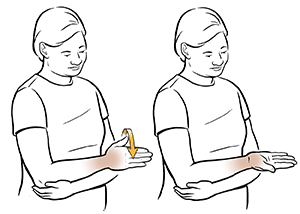
- Supination and pronation is the action of turning your wrist over to have your palm up or palm down.
- This simple exercise aims to improve and strengthen the rotational capacity of the elbow and forearm.
- For this supination and pronation exercise, you will need a washcloth or washcloth-sized piece of material.
- To perform this exercise you have to Stand up straight, holding a washcloth in your hands. Pretend to wring the cloth dry for 6 seconds. Pause and repeat this motion ten times.
- Switch the direction in which your hands are wringing the cloth.
- Repeat this ten times.
Isometric Elbow Flexion
How to do it?
- Elbow flexion is when your forearm moves toward your body by bending at the elbow. It is a motion meant to lift objects and also involves muscles of the upper arm, including the biceps.
- For the isometric elbow flexion exercise, you will need a chair and table.
- To do this exercise you have to Sit straight up in chair with your hands under the table, palm-side up.
- Raise your hands straight upward as if trying to lift the table. Hold this position for 6 to 7 seconds.
- Repeat this exercise ten times. Apply as much pressure as you can without causing pain.
- This exercise strengthens the biceps muscles located in the front of your upper arm as well as strengthening muscles around the radius and ulna bones of your forearm.
- Although you may experience pain during a workout, especially after an elbow injury, never “push through” sharp or shooting pains.
- Pain is your body’s signal that you should stop whatever you are performing.
When did you not exercise?
- If your doctor advised you to take a rest.
- If your upper limb bones are recently injured.
- If you feel pain during this exercise.
- If your arm bone is fractured.


